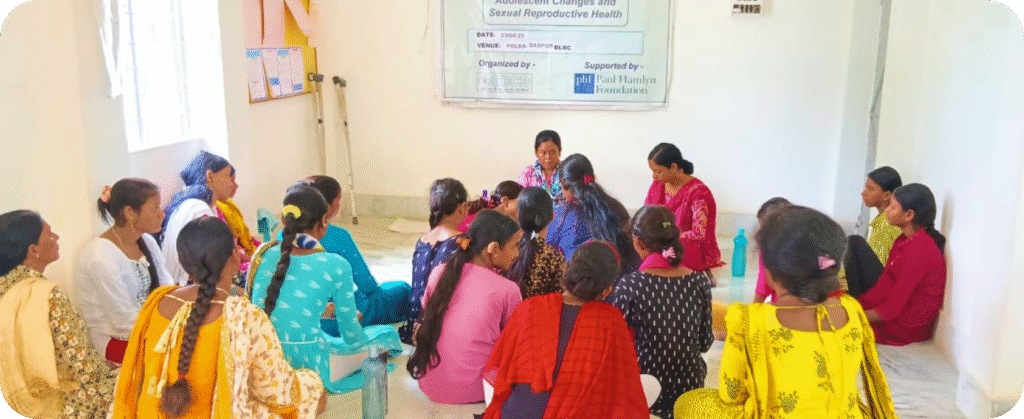

Graham Bell Centre for the Deaf has organized a person with Disability training on “Sexual Reproductive Health & Rights” in its 4 interventional Blocks from 22nd April to 25th April’2025. Attendance in the training in the respective BLRCs: Total 150 participants have participated
The Training was started at 11:00 a.m. with the welcome address from Block Supervisors. Then the facilitator has known name and age from the participants. After introduction session the participants have separated (boys and girls) in two rooms.
After arrangements, the facilitators discussed the concept of adolescence, the characteristics of the adolescent period, and the factors that influence the growth and development of adolescents. Following a brief discussion, participants engaged in group work where they drew a picture which represented the physical differences between young children (boys and girls) and adolescents. Next, a brainstorming session was conducted in which participants explored the psychological and social changes that occur during adolescence.
After that, good and bad touches were discussed. The participants have participated in a role play, and the rest of the participants shared which body parts are acceptable to touch for both boys and girls, as well as which body parts are considered restricted and non-touchable.”
Following that, the facilitator also addressed critical issues such as the menstrual cycle, menstrual hygiene, gender socialization, sexual rights etc. After a brief discussion the facilitators presented a PowerPoint presentation highlighting various nutritious and iron-rich foods essential during adolescence. Subsequently, they discussed sexually transmitted diseases such as Chlamydia and HIV etc. During this training, we have also discussed that if participants face any adolescent health-related issues, they must seek treatment or inform ASHA workers or health workers. After launch, the participants were organized for discussion on addiction, including its various types. A role play was conducted by the participants to illustrate the effects of addiction on their lives and families. The discussion also covered ways to mitigate addiction through medical treatments. Thus the training was concluded with a feedback session from the participants.